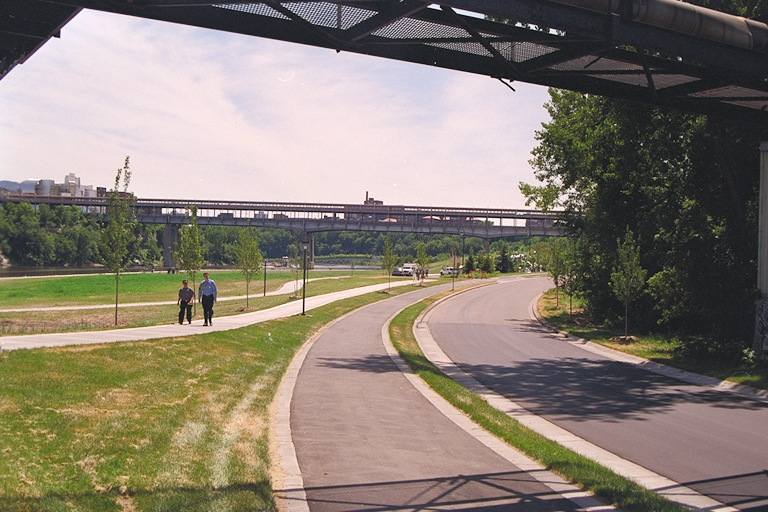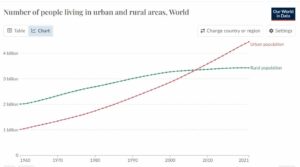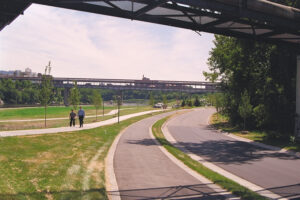Green Spaces: A link between urban life and the natural world

By Jake Richards, IT Specialist Individual Placement / AmeriCorps Member placed at Minnesota Department of Natural Resources, Division of Parks and Trails
Almost 20 years ago, a major shift in how human society is organized took place. In 2007, for the first time ever, the number of human beings living in urban areas eclipsed those living in rural areas globally. This shift has had numerous benefits and consequences for people around the world, enough that you could probably speak endlessly about it. However, one aspect that has recently become a point of discussion is the growing inaccessibility of natural spaces to those in urban settings and what we have started to see implemented to try and fix that.

Before diving into the situation around natural space accessibility for urban residents, we need to define some important terms. Starting with natural space, “a natural space is any area of land that is at worst semi-natural with low levels of human development that contains vegetation, animals, and other non-man-made features.” Natural spaces can come in many forms but are often found in rural areas and can be hard to reach for most of the population. This issue of inaccessibility led to a new term, green space, becoming more and more relevant within ecological and eventually urban planning spaces. Green space is defined as areas of land in urban areas that are set aside for vegetation and natural features, often in the form of parks or water features. Inevitably these areas are more man-made than natural spaces, but they serve to help offer the benefits that natural spaces provide in a more accessible way to urban residents. To help visualize what can be considered a green space, see the local image below.

So why is access to natural or green space so important anyway? Well on top of often being beautiful spaces that if constructed right can offer pleasant contrasts between the urban environment that surrounds them, numerous recent studies have shown that exposing yourself to green space can have a multitude of benefits for your health. These include but are not limited to positive mental health outcomes such as reduced stress, improved cardiovascular and respiratory outcomes due to space for physical activity, and increases in social contact with others in your community. As these benefits have become more known, more and more governments around the world have started to emphasize including them in urban plans to reap the benefits as much as possible. The EU, China, and many large US cities (among others globally) have even created ordinances that require green space within any new urban infrastructure. The ideas around what an urban area should look like are starting to change and more emphasis is being put on human health. Next time you find yourself in an urban area, pay attention to the green spaces that are around you and notice the difference in how you and others around you feel while occupying them.
Sources:
ourworldindata.org/urbanization
www.lawinsider.com/dictionary/natural-space
en.wikipedia.org/wiki/Urban_green_space
www.minneapolisparks.org/parks-destinations/parks-lakes/east_river_flats_park/